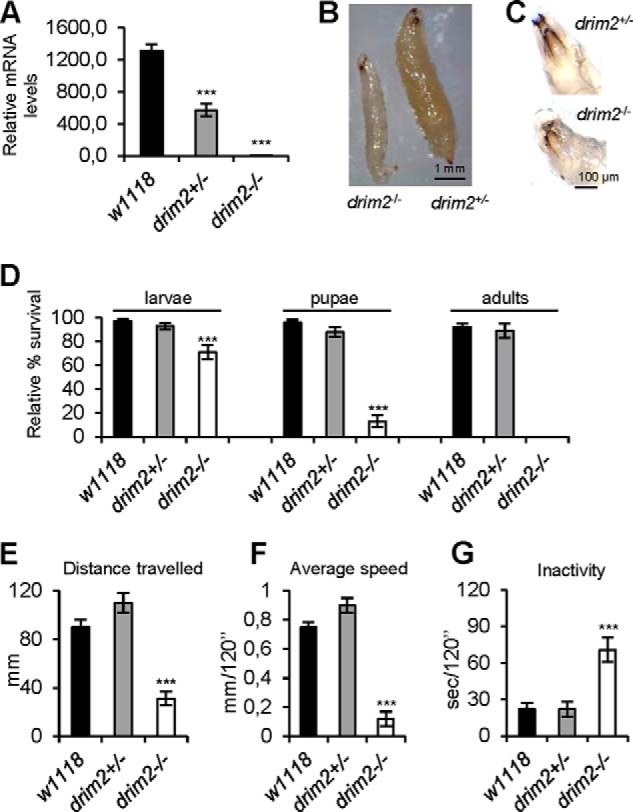FIGURE 4.

Morphological, developmental, and behavioral effects of drim2 KO in vivo. All experiments were carried out in parallel in w1118 (closed column), drim2+/− (gray column), and drim2−/− (open column) third stage larvae. A, drim2 mRNA levels, expressed as relative quantity of template in the sample, were determined by qRT-PCR. B, third stage KO larvae. Heterozygous drim2+/− larva (right) and homozygous drim2−/− larva (left). Notice the smaller size of the latter. C, both hetero- and homozygous KO larvae present mouth hooks, the distinctive characters of the third larval stage. D, relative percentage of egg to adult viability calculated at three developmental stages, i.e. third stage larvae, pupae, and adults. E–G, larval locomotor activity characterized by the three parameters, each calculated in a total recording time period of 120 s. E, total distance traveled (i.e. as millimeters covered); F, overall average speed (millimeters over 120 s); and G, inactivity (seconds over 120 s). Data plotted are means ± S.D. (Student's t test ***, p < 0.005).
